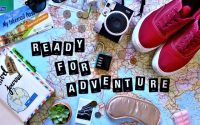How to create a travelling blog
Travel blogs are sites where bloggers share their experiences from travels they took around the globe. They also give practical information on places to visit or activities to try during your trip. In addition to these features, travel blogs also feature photo galleries, useful guides, itineraries, interactive maps, and much more. Travel blogs are becoming extremely popular because they offer a great opportunity for travellers to share their stories and insights with other people. This can be done through blogs, Facebook groups, social media accounts, or even websites. Let’s see below how to create a travelling blog.
Choose a blogging platform
There is no one-size-fits-all solution when it comes to choosing a blogging platform. Your first decision should depend on what you want to do with the site. If you are looking for a simple place to post photos and videos, then WordPress might be your best option. It’s free and has an intuitive user experience. You will need to install plugins (add-ons) to use certain website features. For example, if you want to sell products, you could opt for Shopify.
Write your content
Once you have chosen a platform, you will need to choose whether you want to write posts yourself, ask friends and family to write them for you, or hire someone else to do this work. Another consideration is the frequency of posting; some sites require users to update their blogs daily. Some also allow users to schedule updates at specific times each week. When deciding on the type of content you want your blog to provide, consider your target audience: who would find your blog interesting? There are several types of content that you may include in your blog: news, trends, events, travel tips, and reviews. The most important thing about writing is having fun!

Promote your blog
After creating a blog, you want people to read it and learn something new. To accomplish this, there are two strategies you can employ: SEO (search engine optimisation), which helps search engines like Google rank your blog so that it appears higher in search results, and link building, where you build links back to your site from other quality sources. Both require a bit of work. With SEO, you must constantly add content and keep your blog fresh by adding relevant images, videos and audio files. Link building involves contacting organisations in your industry and offering to provide them with links back to their website on yours, sometimes for a fee. Both strategies require time and effort to implement effectively. In terms of cost, however, SEO is generally less expensive than link building.
Get feedback
You don’t have to be perfect right away but it does help to get feedback as soon as possible. Try asking your friends and family members if they like what you’ve written. Also, seek out online communities such as Reddit and Quora. These websites are a good way to connect with other people interested in the same topics. Many travel lovers go to forums devoted to trips or destinations, especially those related to food. Ask fellow travellers what they think of your blog visit casino clic. Find ways to measure its success and evaluate your approach. Evaluate your progress according to metrics such as page views, number of followers, comments and shares. Use tools such as Google Analytics, a tool that provides statistics on how many people visit your site. This enables you to tailor your strategy accordingly.
In conclusion, I hope we have helped you understand the different platforms available to personalise your online presence. We suggest starting small and growing organically over time. By creating a website that is more attractive to visitors, you will increase your chances of converting website traffic into leads – a crucial step towards generating sales.


